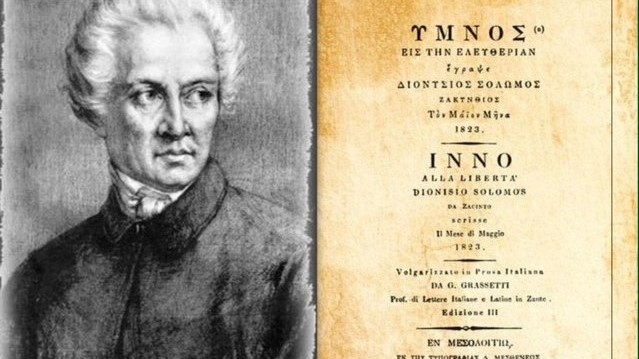
Stories Talk | Presentation Skills and Effective Storytelling
Stories Talk | Presentation Skills and Effective Storytelling
By Mia Kollia
Translated by Alexandros Theodoropoulos
This is the first reason that makes him the national poet of the Greeks. The second, equally important, is because, as Giorgos Seferis wrote: “he was able to chart, as far as his time allowed, the path that the Greek expression would take. He loved vivid language and worked all his life to elevate it to the level of poetry he envisioned. It was an effort that went beyond the power of one and only person".
The first Life Steps
Dionysios Solomos was born on April 8, 1798 in Zakynthos, as an illegitimate child of his father and of maid Angeliki Nikli. Nikolaos Solomos recognised both Dionysios and the second son he had with her, as his own children. At a very young age, Dionysios Solomos was orphaned and in 1808 he left to study in Italy.
Seven years later he graduated from the High School of Cremona and enrolled at the University of Pavia, where he received a law degree but he never practiced law professionally. In parallel with his studies, he began to write verse in Italian, while he came in contact with great philosophers and remarkable representatives of the literary field of the time.
Greece and the difficult road to the Hymn
He returned to Zakynthos in 1818, after finishing his studies. There was a remarkable intellectual movement on the island in the 18th century, thus, Solomos found people with an interest in literature, with whom he quickly developed friendly relationships. They often gathered in friendly houses and had fun with improvised poems.
At that time he made his first attempts to write in Greek - a difficult task since his education was classical and Italian. To shape his poetic language, he started studying folk songs, the work of pre-Solomian poets, as well as folk and Cretan literature, which were then the best samples of the use of the vernacular in modern Greek literature.

The "Hymn to Liberty" was the first important milestone of his work. The poem was published in Greece and Europe and the poet's fame spread beyond the borders of his island. Shortly afterwards, he composed the lyric poem "Ode to the Death of Lord Byron", followed by "The Destruction of Psara", "The Poisoned", "The Free Besieged" and "The Whale", which are acknowledged as his best works.
Corfu of Arts and Spirit
In 1828, Solomos settled in Corfu, the place where he lived until his death. Corfu at that time was a great spiritual center, which gave him inspiration for creation. After all, he was at the core of a circle of highly educated intellectuals, with progressive and liberal ideas and great art potential. The most significant and influential people with whom the poet was associated were Nikolaos Mantzaros, Ioannis and Spyridon Zampelios, Andreas Moustoxydis, Iakovos Polylas, Ioulios Typaldos, Gerasimos Markoras and others.
In 1833 a distressing trial began for the poet, as his half-brother from his mother's second marriage, claimed that he was also a child of Nikolaos Solomos, asking for part of the inheritance. Although the trial ended in favour of the poet, it influenced him psychologically and he started becoming alienated from people.
Alone and Lonely
After 1847, Dionysios Solomos began to write in Italian again. However, the works of this period remained incomplete. In 1851, serious health problems appeared and his behaviour became even more quirky. He was completely cut off from his friends and after the third cerebral palsy he suffered in 1856, he no longer left the house. He finally died in February 1857. His fame was so great that all the people mourned. The theater of Corfu was closed, the Ionian Parliament was put on hold and mourning was declared in the poet’s honour. His bones were transported to Zakynthos in 1865.